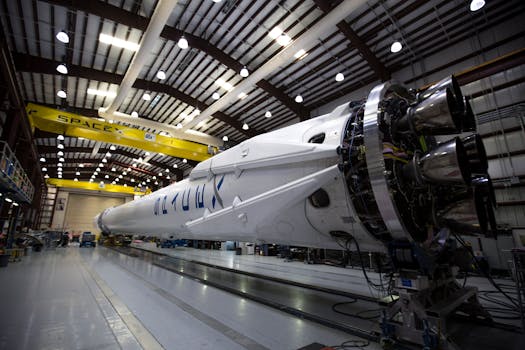Satellite Telecommunications 2023: Key Developments and What They Mean for the Industry

Satellite Telecommunications 2023: Key Developments and What They Mean for the Industry
The satellite telecommunications industry has experienced remarkable growth and innovation in recent years, and 2023 has been no exception. With the increasing demand for global connectivity, satellite telecommunications have become a vital component of modern communication systems. In this article, we will delve into the key developments in the satellite telecommunications industry in 2023 and explore what these advancements mean for the future of the industry.
Advancements in Satellite Technology
One of the most significant developments in the satellite telecommunications industry in 2023 has been the advancements in satellite technology. New satellite designs and launches have enabled faster, more reliable, and more efficient communication systems. For instance, the launch of the James Webb Space Telescope has demonstrated the potential for satellites to support high-speed data transmission and advanced astronomical research.
Furthermore, the development of High-Throughput Satellites (HTS) has revolutionized the industry by providing higher bandwidth and faster data transfer rates. HTS has enabled the widespread adoption of satellite-based broadband services, bridging the digital divide in remote and underserved areas. The increased capacity and reduced latency of HTS have also made them an attractive option for applications such as video streaming, online gaming, and cloud computing.
New Satellite Launches and Constellations
2023 has witnessed a surge in new satellite launches and the deployment of satellite constellations. Companies such as SpaceX and Amazon’s Kuiper Systems have launched numerous satellites as part of their ambitious plans to create global satellite constellations. These constellations aim to provide seamless, high-speed connectivity to underserved areas, as well as to support a wide range of applications, including IoT, maritime, and aviation.
The launch of these satellite constellations has significant implications for the industry, as it is expected to increase competition, drive down costs, and improve services. Additionally, the deployment of satellite constellations has sparked concerns about space debris, satellite congestion, and the need for more effective satellite management and regulation.
Increased Investment and Partnerships
The satellite telecommunications industry has seen significant investment and partnerships in 2023, with companies, governments, and organizations collaborating to develop new technologies, launch new satellites, and expand existing services. For example, the European Space Agency (ESA) has partnered with private companies to develop new satellite-based services, such as satellite-based Earth observation and navigation.
Moreover, the growing demand for satellite-based services has attracted new players to the industry, including tech giants and start-ups. This influx of new investment and partnerships has accelerated innovation, driven growth, and expanded the range of services and applications supported by satellite telecommunications.
Challenges and Future Directions
Despite the significant developments in the satellite telecommunications industry in 2023, there are still challenges to be addressed. One of the major concerns is the issue of space debris, which poses a significant threat to the long-term sustainability of satellite-based services. Additionally, the industry must also contend with regulatory challenges, including the need for more effective satellite management, frequency allocation, and licensing.
Looking ahead, the satellite telecommunications industry is expected to continue to evolve and grow, with new technologies, applications, and services emerging. The development of 5G and 6G networks is expected to further integrate satellite telecommunications into the broader communications landscape, enabling new use cases, such as massive machine-type communications, ultra-reliable low-latency communications, and enhanced mobile broadband.


